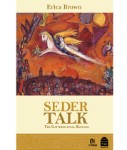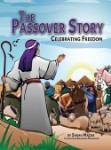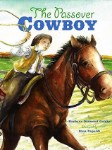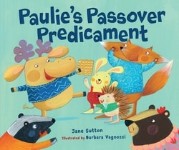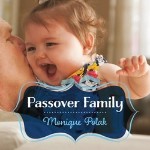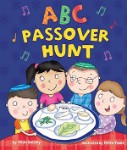Abstracts of Giller’s Kabbalists of Beit El (2008)
Pinchas Giller‘s third book titled Shalom Shar’abi and the Kabbalists of Beit El came out two years ago as I wrote about it at the time. Today I found that abstracts of each of the nine chapters have been posted on the Oxford scholarship site. You can purchase access to the full text version as well. But for now here are the abstracts:
1. Shar’abi and Beit El
This chapter introduces the spiritual progenitor of the Beit El School, Shalom Shar’abi and presents the highlights of his picaresque career. Shar’abi did not found Beit El, which predated his arrival by some years, but he galvanized the school to the extent that its members considered his interpretation of Kabbalah to be the only acceptable one. This position was adopted more widely in the kabbalistic world and even beyond it, so that many prominent Talmudists of the 19th century also accepted Shar’abi’s hegemony. In the contemporary period, there has been an upsurge of interest in Beit El kabbalah and it is widely recognized as a dominant and authoritative school of Kabbalah.
2. Kavvanah and Kavvanot
The kabbalistic practice of prayer intentions, or kavvanot, derives from the general theological problem of proper intention in observing the laws of Judaism. The experience of kavvanot practice is otherwise hard to quantify and has been the subject of much discussion by scholars. With regards to ethics and the other devotional aspects of religious life, the Beit El kabbalists were largely dependant on earlier sources and produced little of their own. For the Beit El kabbalists, linguistic mysteries served the same purpose as symbolism and mythos in earlier kabbalistic systems. Nonetheless, they retained the traditions of erotic union with the Shekhinah and other hallmarks of classical Kabbalah. The contemporary scholar J. Garb as argued that these processes are techniques to harness sacred power, although the Beit El practice developed past the models presented in Garb’s typologies.
3. The Names of God in the Beit El Kavvanot
Shar’abi’s principal innovation in the development of his prayer intentions was to utilize a particular composition in the Lurianic canon, the “Gate of Names” which recast the entire kabbalistic mythos in terms of the development of sacred names. The actual texts of the Beit El kavvanot consist of sacred names of God to be meditated upon as the adherent’s lips recite the prayer service. The traditions that underlie these sacred names are very ancient and in some respects predate the development of classical Kabbalah. The sacred names encompass a number of traditions: numerical coefficients, rewriting, substitution, and other linguistic strategies. Names are thought to represent aspects of the sefirotic mythos. Ultimately, the effect of the name traditions is to engender a kind of obscurantism, in which the technical construction and contemplation of the names overwhelms any other possibilities for noetic experience.
4. Kabbalists in the Community
The Beit El circles, from their inception to the present, have seen themselves as practicing the most essential and avant-garde form of Judaism. To this end, the Beit El tradition developed specific models of behavior for its adepts. The contemporary Jerusalem kabbalist Ya’akov Moshe Hillel has presented a revamped set of rules for the aspiring acolyte. There is an inherent tension in the role of the kabbalist in the community, as Beit El acolytes are drawn from an economic and social cross section of the Israeli religious community. In urban areas, the kabbalists live as mendicant pietists supported by the largesse of the public. Hillel also is compelled to resolve the role of the Yeshivah in the milieu of ultra-orthodox Jerusalem, particularly the relationship to Talmud study, which is an article of power in the economic life of that community. Insofar as the kavvanot practice of Beit El is the apex of prayer, the kabbalists also have an ambivalent relationship to exoteric prayer.
5. Beit El Practice
Beit El thought and practice eschews “classical” Jewish mysticism in favor of a worldview entirely based on Lurianic Kabbalah. In some cases, Beit El kabbalists are at a loss when non-Lurianic practices do enter their culture. One exception to this rule is the ongoing reference to the vicissitudes of the Shekhinah. Otherwise, Beit El is distinguished by their specific doctrines attached cycles of time, such as the atonement cycle. The Beit El kabbalists practiced flagellation and other mortifications, assuming a special responsibility for the fate of the people Israel. These rites of self-mortification reflect an ancient pietistic suspicion of the efficacy of Halakhah. Another time-based practice was the observance of the Sabbatical year, which was the object of much controversy in Beit El, and the counting of the Omer. The Beit El kabbalist are notable for their practice wearing double sets of phylacteries as an act of piety, and practice the rite of ascent through the four worlds of existence during their morning prayers.
6. Shar’abi’s School
The Beit El “school” consists of a particular lineage of sages, drawn from the Jews of the Orient, from Jerusalem to Aleppo and thence to Baghdad, with contributions from the “sages of Tunis.” Acolytes of Shar’abi’s teachings also dominated Sephardic chief rabbinate of Jerusalem for much of the late eighteenth and nineteenth centuries. Shar’abi’s immediate heirs assumed the initial leadership of the circle and also produced a substantial number of books. Among the Beit El kabbalists, the sages of Aleppo have great authority and credibility and are considered to have preserved the most authentic version of Shar’abi’s kavvanot. One of these, Hayyim Shaul Dweck, moved to Jerusalem and precipitated a split in the community, moving part of the community in the Bukharian quarter of Jerusalem’s New City. Dweck also began to publish Shar’abi’s kavvanot. The third center of Beit El activity was Baghdad, which was dominated by the personality of R. Yosef Hayyim, the Ben Ish Hai. The Beit El school included many European kabbalists, as well, so that it may be seen as an early cross-over institution.
7. The Literary Tradition of Beit El
The Beit El kabbalists root their practice in Shar’abi’s theoretical writings, which are uneven and call for much interpretation. Shar’abi produced a number of mystical prayers and also formalized penitential rituals of self-mortification. Much of the literary activity of the Beit El kabbalists is devoted to resolving the desiderata and discrepancies remaining in Shar’abi’s writings, The most widely known evidence of Shar’abi’s activity is “his” prayer book, the Siddur ha-RaShaSh, which was compiled posthumously by many hands. As a result of these factors, there are many versions and editions of the prayer book. In order to reinforce Shar’abi’s authority and spiritual hegemony, the Beit El kabbalists continued the Lurianic limitations of the kabbalistic canon.
8. The Kavvanot in Hasidism
Beit El is cited in the earliest records of the Hasidic movement, although the kabbalists were culturally and geographically disparate. The founder of Hasidism, the Ba’al Shem Shem Tov, moved among groups of pietists that the earliest manuscript prayer books, which in turn formed the basis of the “Nusakh AR”I,” the order of prayers in the Lurianic style. Of these, the edition by Avraham Shimshon Rashkov was most influential. Menachem Kallus as demonstrated that the Ba’al Shem Tov was an avid practitioner of kavvanot. Nonetheless, in subsequent generations the leaders of Hasidism moved to ban the practice. Nonetheless, they devised an order of prayers that they called “Lurianic,” which has become normative today.
9. Conclusions: Mysticism, Metaphysics, and the Limitations of Beit El Kabbalah
This book is a combination of a historical survey of a kabbalistic school and a study of a “lived tradition” that is, a living community of Kabbalists. Beit El has maintained a direct historical link to earlier schools going back to the Safed revival. It is assumed that Kabbalah is Jewish mysticism and that, as “mysticism,” it shares common properties with other mystical traditions in the religions of the world. There seems to be little of the mystical experience in Beit El Kabbalah. The metaphysical object of the practice is clear, however. Beit El kabbalah is obviously an authentic form of Jewish esotericism. Boaz Huss of Ben Gurion University has addressed these reasons with a bracing clarity in recent years. The terms of the “study of mysticism” originated in Christology and have often retained an appropriationist dimension. These anxieties have blinded scholars to certain new developments in the history of Kabbalah. Beit El kabbalah may serves as a wedge to distinguish Kabbalah from “mysticism.”

